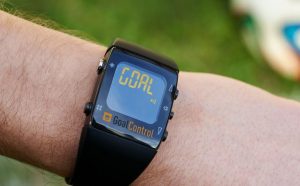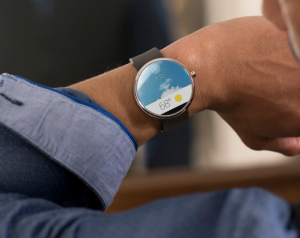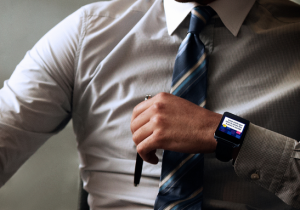There’s no reason to point out how popular smartwatches are, we’ve already done it a dozen times. That being said, there still seems to be a lot of experimentation and innovation when it comes to using them. More specifically, there are a lot of useful applications for smartwatches that have yet to be discovered or adopted.
They could be used by astronauts, politicians, explorers, sports enthusiasts and much more. Recently, we saw referees in the world cup using proprietary smartwatches to monitor goals. Any time one of the participating teams would score, a unique goal monitoring system would ping the ref’s watches letting them know what happened. Of course, the final call was left to the referees but this is just one way that smartwatches are being used in today’s world. Just think of how that will change over the next couple years as more and more devices hit the market.
To contribute, we thought it would be great to list five of the most innovative real world applications for smartwatches that may soon come to be.
Five Real World Applications for Smartwatches
Consider this a list of things we would love to see happen over the next few years. While smart devices in general are certainly making it big, there are a lot of things that can still be accomplished. Smartwatches can be utilized to complete a whole slew of different tasks. Here are the five best examples of how smartwatches can be used in the real world.

Food and Service Smartwatches
Waiters and waitresses often have to record customer orders the old fashioned way on a pad of paper. The problem with this is that any time a customer changes their order, their waiter or waitress may forget to mark down the new info. This is understandable, especially when they have quite a few tables to service.
Several restaurants have begun using modern electronics to handle customer orders. Unos Pizzaria, for example, allows customers to make an order from a tablet and then pay their bill from the same device. Imagine for a moment if this ordering system was broadened to include smartwatches. Waiters and waitresses could wear the smartwatches on their wrist, which would receive updates in realtime from their customers. Any time you need a drink, want to change an order or pay your bill you can simply ping your service provider.
Of course, there are ways that the system can be abused by some rather impatient customers but it would still make things a whole lot easier for those in the food and service industry.
Convenient for the Travel Industry

This usage scenario could actually offer a couple different applications. Families of those who travel often could keep track of where their loved ones are. Although, this is already possible with a smartphone thanks to GPS tracking it would be great for wearables too. Then again, some folks out there probably don’t want to be tracked – even by their families.
The other application is to transmit and store travel data and related documents. This would require a more widespread adoption of modern tech by multiple parties but that’s not out of the question. Imagine carrying your travel voucher, digital passport and itinerary on a smartwatch. When you’re ready to take off, or check-in you can just scan or tap your smartwatch to the appropriate transmitter thanks to NFC (near field communication).
It may be a few years before we see something like this come about. However, Copenhagen airport recently decided to distribute – on a trial basis – Google Glass to their concierge employees. That’s another type of wearable entirely, but it just shows that smartwatches could also work.
Medical Service Industry
At any given time, doctors have to monitor health patterns of several different patients. In the event of an emergency, wouldn’t it be beneficial if they had a small wearable device that could ping alerts?
In that vein, smartwatches would be perfect for the medical service industry. The watches could be programmed to connect wirelessly to patient beds, or sensors in their room. When something goes wrong, it could ping alerts to the doctor or nurses – allowing them to react much faster.
This can even be evolved to include other medical establishments. Imagine a cheap smartwatch that can be worn by elderly patients at a hospice. When something goes awry, or when they need assistance the wearable device can be used to ping for help.
The beauty of smartwatches is that they feature a wireless connection but often retain decent battery life. Therefore, professionals wouldn’t need to worry about charging them often.
College and Corporate Campus Tools
Every so often colleges will send out news updates to students about events, activities and even local happenings. Students could purchase a connected smartwatch that allows them to receive this information in realtime. SInce smartwatches also include third party app support, students could use the devices for organization and personal tasks too.
Many colleges allow the same type of functionality for smartphones, but smartwatches are actually cheaper in most cases. They can be repurposed by resourceful developers and made to tap into a secure network on campus. Taking that idea a step further, they could also be used by businesses in the same way.
Imagine receiving information about TPS report deadlines via a wearable on your wrist? Wouldn’t it be great if you could receive frequent reminders about those exams coming up? Technology is wonderful, isn’t it? There were too many questions crammed into such a small space, sorry about that.
Customer Service and Theme Park Tools
This one may be a little more far fetched than some of the other scenarios on the list, primarily because companies don’t like to spend lavishly on their employees. That being said, smartwatches would be great in places where customer service is necessary.
You know those call boxes they generally have in department stores that allow you to call an employee over? The same kind of feature could be implemented, except with smartwatches instead. You could ping nearby employees via a smartwatch just to let them know there’s a spill in aisle seven.
As with anything else on this list, this usage scenario could definitely be taken advantage of. Although if we stifled innovation just because some people are rude, we’d never get anywhere.
Smartwatches would also be great for theme park employees. If used to connect to a private network, park attendants could be siphoned important information about the park. For example, they could share waiting times for rides, monitor the breakdown status of attractions, and even provide news to interested visitors. Wondering when that brand new rollercoaster is going to be finished and ready to ride? Just ask the nearest theme park employee outfitted with a nifty smartwatch.
Besides, this seems like something good ol’ Disney could warm up to and let’s be honest – they probably wouldn’t go for Google Glass.
Share Your Ideas
This is not a comprehensive list, and there are hundreds – nay, thousands – of ways that smartwatches can be used in the real world. Feel free to share your ideas. What do you think we could see in the near future? What are some innovative ways that you could see smartwatches being used?

